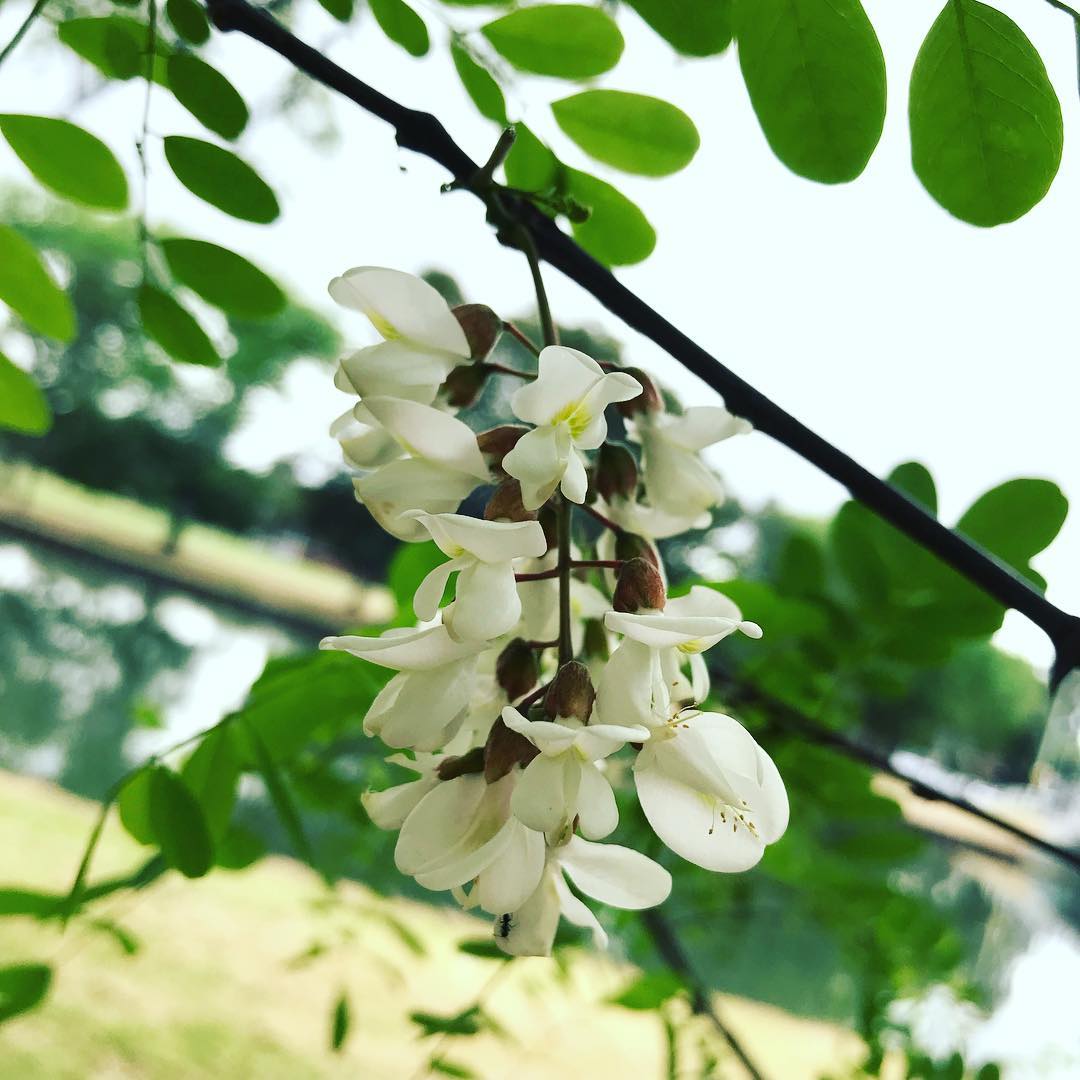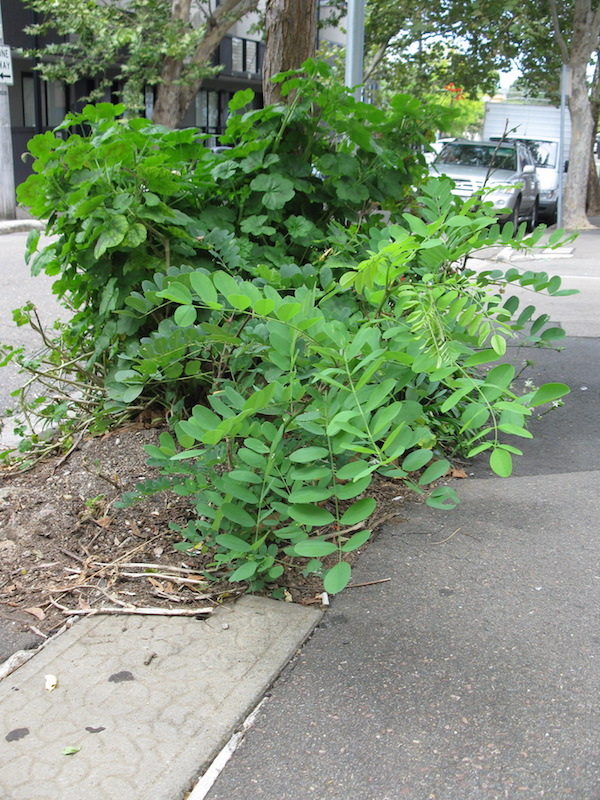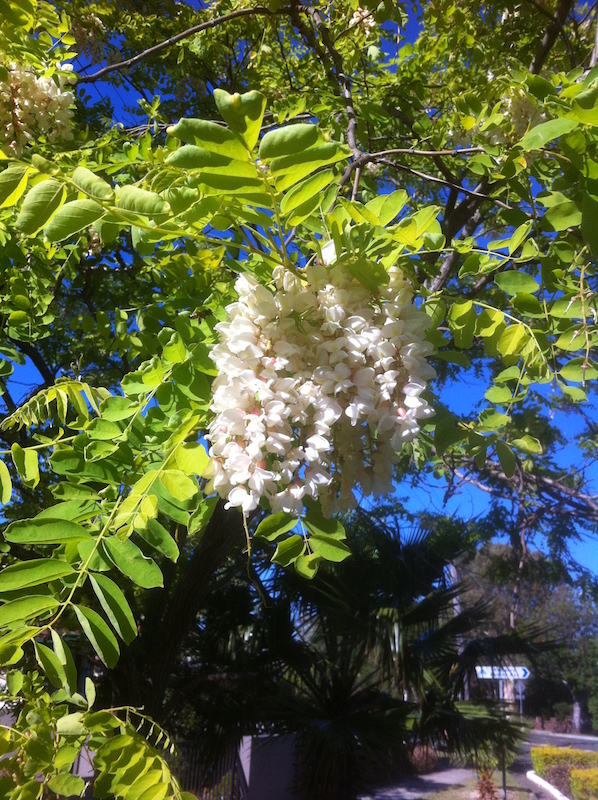In season now: Robinia flowers
Most people would have no idea that some of the trees that line our cities have edible flowers. Some of this trees would be planted in gardens as ornamental and sometime they even naturalised and self-seed themselves.
This is true of a cosmopolitan ornamental/weed tree common in many parts of the world: Robinia.
In Australia the glorious yellow foliage has been a council's favourite for many years since the 80's when it was marketed as an attractive (true) and resilient (also true) tree.
This days there is much debate whether the plant should be used in landscaping at all, mostly due to the peculiarity of the plant to produce suckers (un-planned new growth from the roots). The varieties commercially available has been grafted on Robinia Pseudoacacia rootstock a common weed making the Golden Robinia a facilitator to weedy outburst.
Despite the problems with the plant, we are talking food over here, and the flowers are oh-so-good. Check out the yummy presentation below by Studio Neon or this recipe for flower fritters here>
Latin Name: Robinia pseudoacacia
Alternative Name(s): False acacia, Locust tree, Yellow locust, Robinia, Black locust
Family: Fabaceae
Known Hazards: All parts of the plant (except the flowers) and especially the bark, should be considered to be toxic. The toxins are destroyed by heat.
Physical Characteristics: Robinia is a small genus of about twenty species of trees and large shrubs usually with spines on the branches. Leaves have many leaflets giving a fine tracery when viewed upwards. Sweetly perfumed, white pea-like flowers borne in tresses are followed by small brown pods with several seeds. The flowers are hermaphrodite (has both male and female organs) and are pollinated by Bees. It can fix Nitrogen. It is noted for attracting wildlife.
Edible Uses
Edible Parts: Seeds are boiled and used like peas. After boiling the seeds lose their acid taste. The young seedpods are cooked and a strong, narcotic and intoxicating drink is made from the skin of the fruit. Piperonal is extracted from the plant, it is used as a vanilla substitute. All the above entries should be treated with some caution, see the notes at the top of the page regarding toxicity. The flowers are cooked and have a fragrant aroma, used in making jams, pancakes or a pleasant drink.
Medicinal Uses
The flowers are cooked and eaten for the treatment of eye ailments. The flower is said to contain the antitumor compound benzoaldehyde. The root bark has been chewed to induce vomiting, or held in the mouth to allay toothache. The seedpod is narcotic while the leaf juice inhibits viruses.
Other Uses
A drying oil is obtained from the seed while a highly valued essential oil is obtained from the flowers and used in perfumery. A yellow dye is obtained from the bark and is also used to make paper and is a substitute for silk and wool. Trees sucker freely, especially if coppiced, and they can be used for stabilizing banks etc. The wood is close-grained, exceedingly hard, heavy, very strong, resists shock and is very durable in contact with the soil. It weighs 45lb per cubic foot and is used in shipbuilding and for making fence posts, treenails, floors etc. A very good fuel, but it should be used with caution because it flares up and projects sparks. The wood of Robinia pseudoacacia var. rectissima, the so called ‘Long Island’ or ‘Shipmast’ locust, has a greater resistance to decay and wood borers, outlasting other locust posts and stakes by 50 – 100%.
Notes: Black locust produces root suckers when the roots are disturbed and dense clumps may develop crowding out other plants. It was often planted around homesteads and stockyards and sometimes the dense thicket is the living reminder of former farming ventures.
Although native to North America it has become naturalised in Europe forming thickets in disturbed land along roadsides and railways and reducing the view of the surrounding countryside for travellers. It has transformed grassland into open woodland in parts of Germany.
The characteristics which make it weedy have been used to advantage in erosion control work in Hungary. The roots also fix nitrogen in the soil.
Black locust is naturalised in WA, SA, Victoria, NSW and Queensland. It was sometimes planted in Canberra last century as a street tree and is a scattered weed in the ACT. It is still available in nurseries although ‘mop top’ cultivars are now more popular for small gardens. It is still used as the rootstock however and the problem of suckering has been reduced but not solved.
Check Wild Food Map for locations worldwide>>
More info> Wiki








